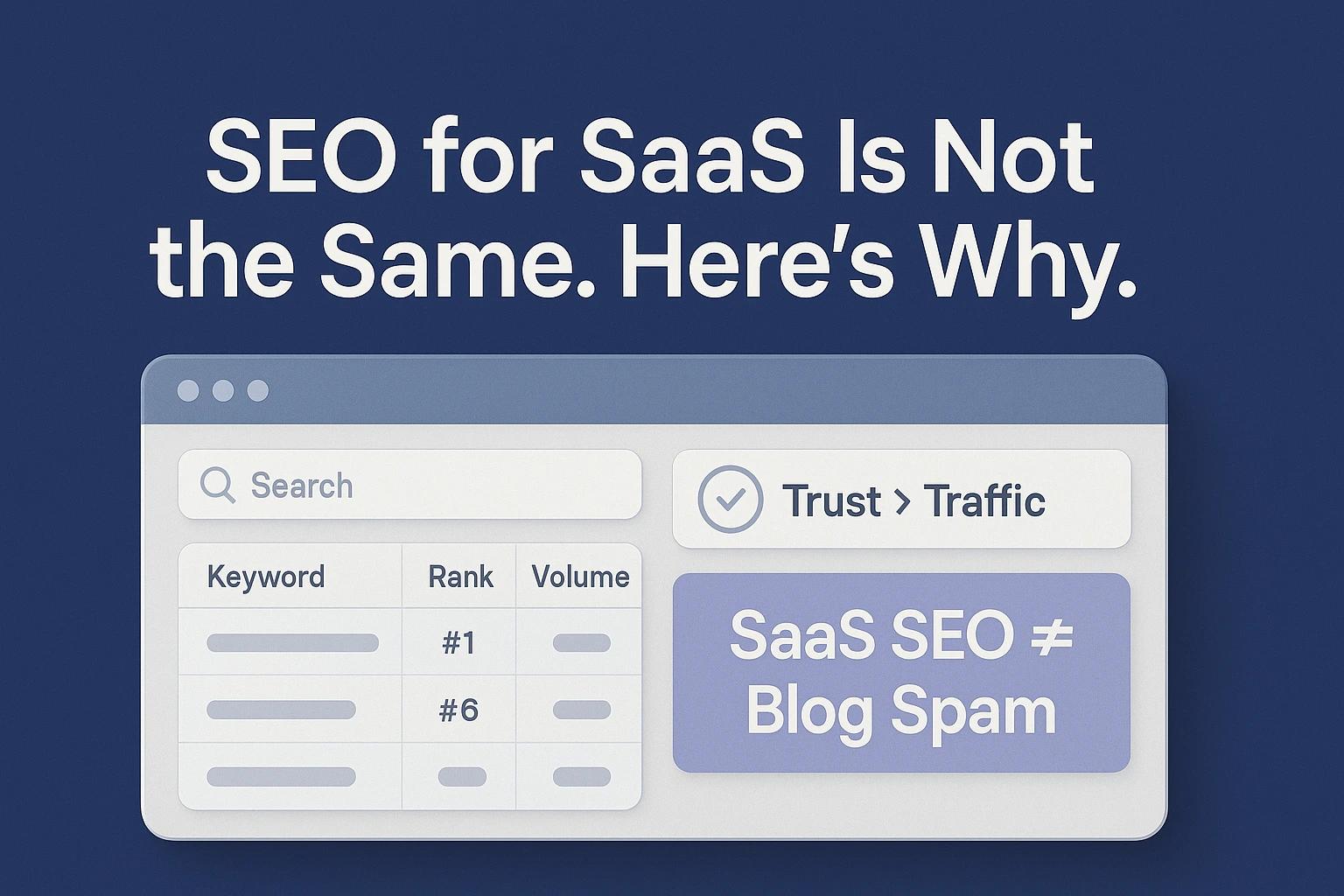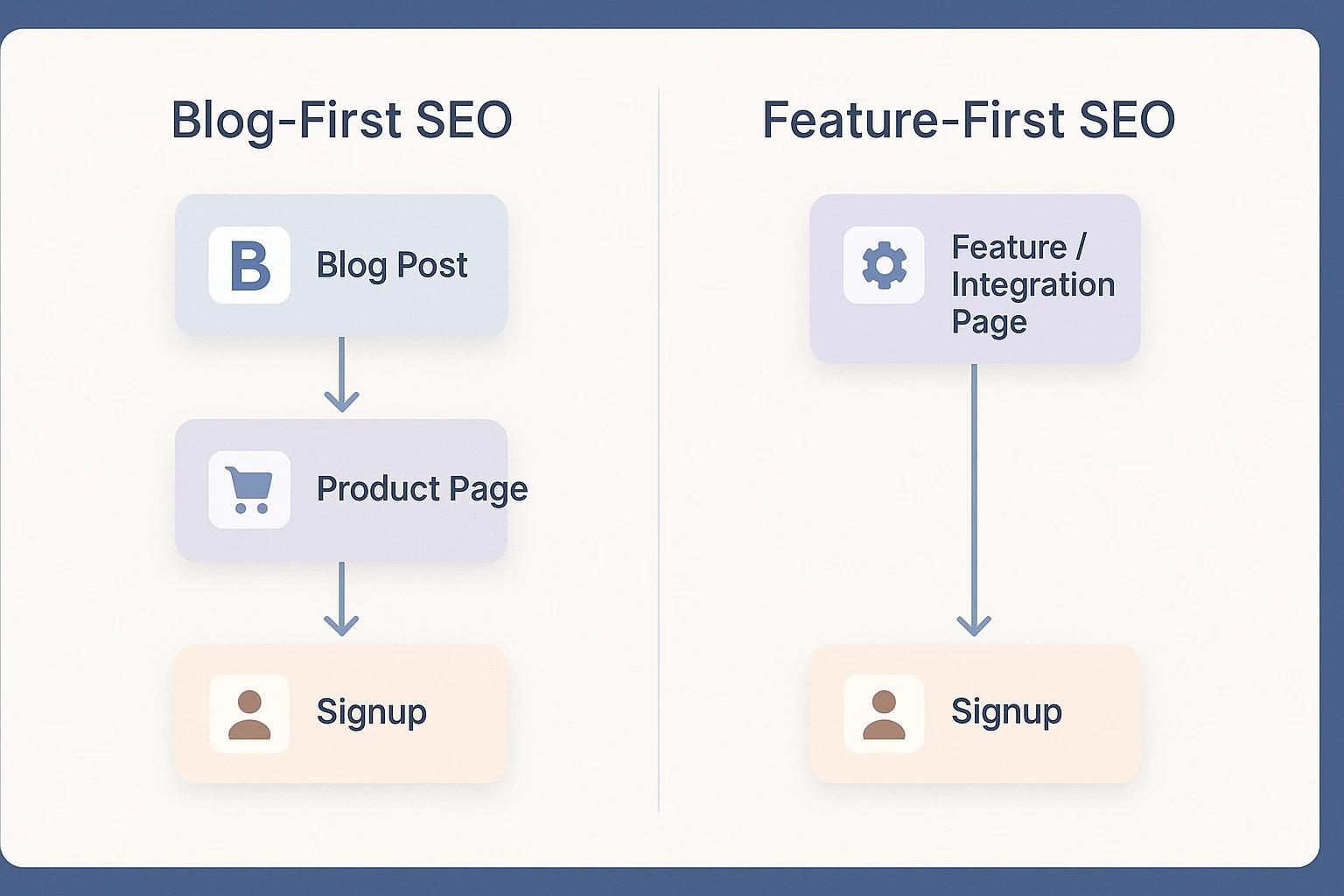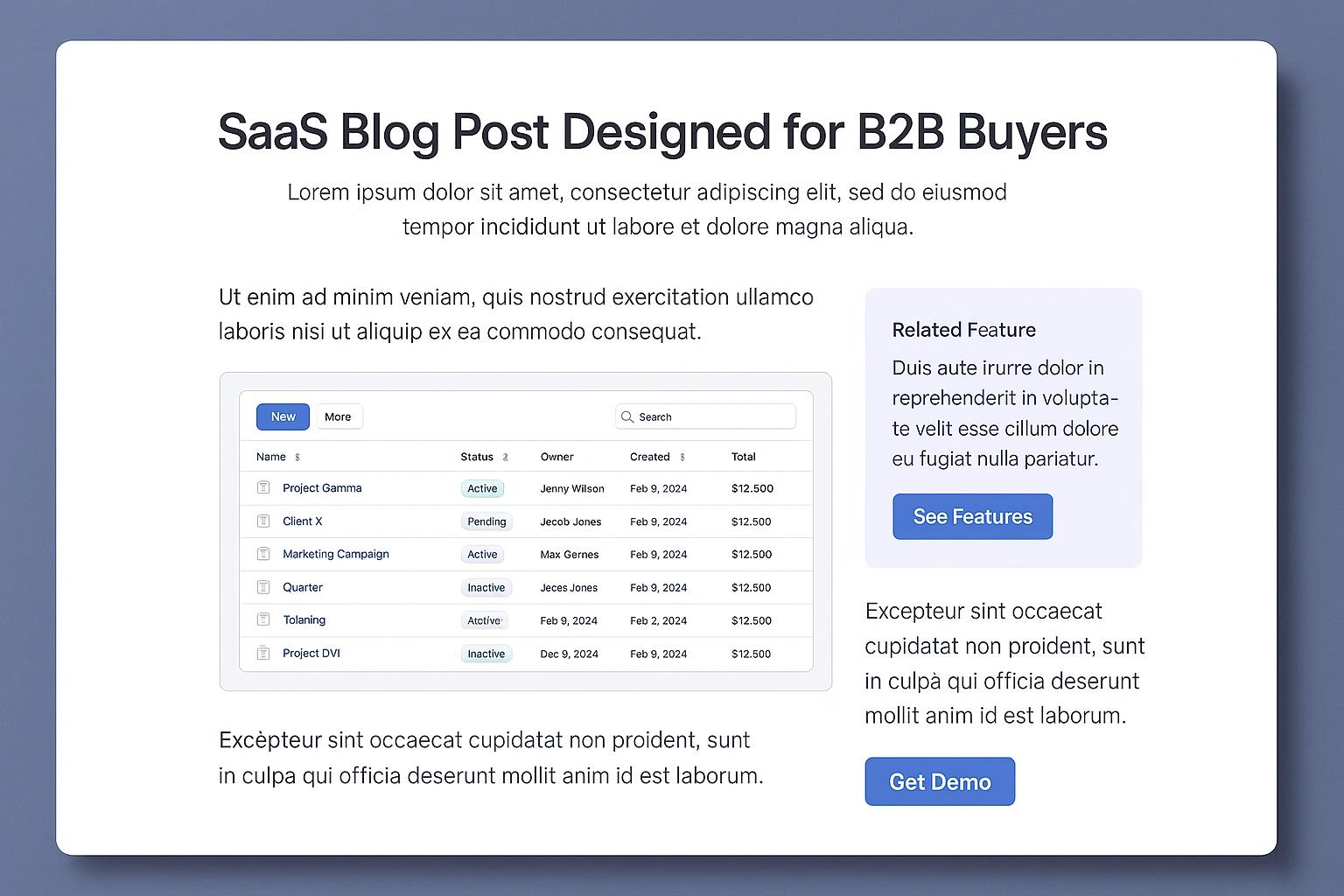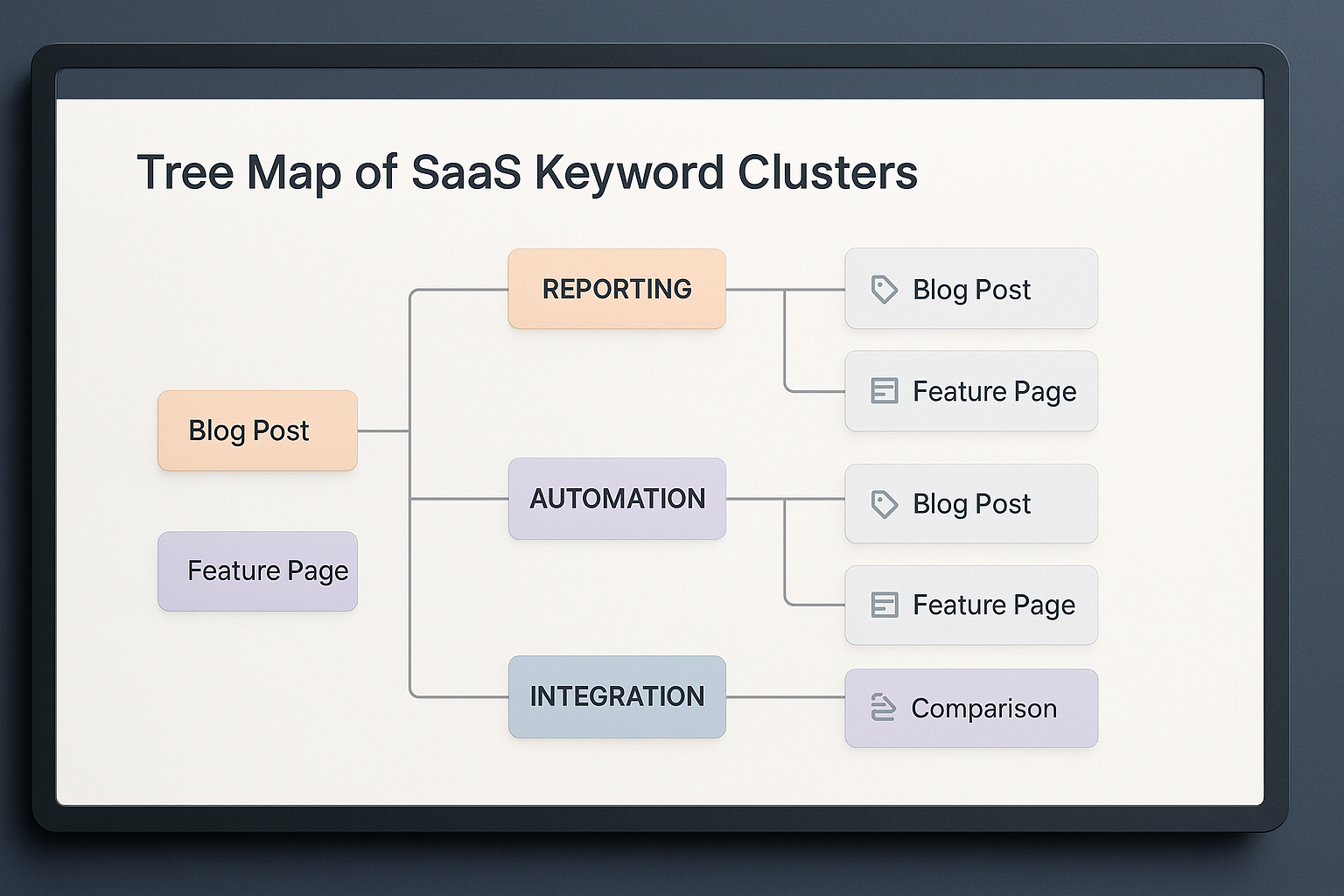
SaaS SEO Isn’t Blog Posts + Keywords. It’s a Trust Engine.
Most SaaS founders hear “do SEO” and immediately start publishing keyword-stuffed blog posts.
But here's the reality:
- SaaS buyers don’t browse they search with intent
- Decision-makers don’t read fluff they scan for credibility
- SEO is less about ranking, more about being reference-worthy
If you treat SaaS SEO like eCom or affiliate SEO, you’ll miss your real leverage. This post explains what makes it different and how to approach it.
The Intent Behind SaaS Keywords Is Higher (And Narrower)
In SaaS, the buyer is often:
- Solving a known problem
- Comparing tools
- Looking for integration fit
- Vetting trustworthiness
This means keywords like:
- “[Tool] vs [Tool]”
- “Best [category] software for [industry]”
- “How to [solve problem] with [tool]”
They’re not browsing. They’re shortlisting.
Related: What a SaaS Landing Page Should Really Say
Blog Posts Aren’t the Entry Point. Feature Pages Are.

In eCom, content brings people in. In SaaS, feature or integration pages often outrank blog posts.
Examples:
- “Stripe Integration for SaaS Billing”
- “Custom Onboarding for Enterprise Teams”
- “SOC 2 Compliant Knowledge Base Software”
If your SEO strategy ignores product pages, you’re missing your top-converting entry point.
Fix:
- Optimize feature, industry, and integration pages
- Build links to them (not just the homepage)
- Structure them to convert, not just rank
Related: Homepage Structure That Speaks to B2B Buyers
Thought Leadership ≠ Rankings (But It Fuels Linkable Content)
Not every founder post or insight piece is for SEO. And that’s okay.
Here’s how SaaS teams balance it:
- Use founder insights for distribution (LinkedIn, newsletters)
- Use linkable content to earn authority (data studies, teardowns, benchmark reports)
- Use SEO-focused content to rank for decision-making keywords
You need all 3. But only one drives traffic directly from search.
Related: What Founders Should Know About Blogging
Technical SEO Still Matters But in Different Places

SaaS sites often forget:
- Documentation pages can rank
- Help center articles answer longtail questions
- Integrations directories pull in niche traffic
Run a crawl (Ahrefs, Screaming Frog, Sitebulb) and check:
- Canonical tags
- Crawl depth >3
- Duplicate H1s or metadata on similar feature pages
Don’t ignore the support site that’s often 30%+ of total organic traffic.
Related: Internal Linking That Actually Helps Rankings
Keyword Research Requires B2B Buyer Insight
In SaaS, keyword tools alone don’t show the real queries. They miss:
- High-intent combo searches (“best SOC2 LMS for fintech”)
- Vendor vs vendor comparisons
- Terms your customers use on sales calls or onboarding forms
Better input sources:
- Sales transcripts (Gong, Chorus)
- Chat logs from support and onboarding
- LinkedIn comments under relevant posts
- Your own search console data from integration pages
Related: Keyword Research Without Paying for Tools
SaaS SEO Should Guide Sales, Not Just Traffic

Great SEO content reduces:
- Demo no-shows
- Low-fit leads
- Repetitive sales questions
Here’s how:
- Include real product screenshots in content
- Link to relevant feature pages
- Add pricing visibility when possible
- Include “Who this is for / not for” in blog posts
This filters out mismatched traffic before it clogs your pipeline.
Related: Sales Funnels That Don’t Confuse Buyers
Link Building for SaaS Isn’t Just Outreach — It’s Co-Creation
Cold outreach for backlinks is fading.
What works now:
- Partner roundups (e.g. “11 Tools Our Agency Uses With [X] Platform”)
- Customer-powered content (quote or feature a user)
- Integration partners linking to your shared guide
- Using your API to publish data-backed benchmarks
SEO isn’t just about visibility it’s about getting other people to reference you.
One Keyword ≠ One Page

A huge mistake SaaS sites make is overloading a single blog with:
- Every pain point
- Every persona
- Every feature
Split it.
One keyword = one purpose = one page.
Examples:
- “Project management software for UX teams” ≠ “Agile task tracking tool”
- “Best HR software for remote companies” ≠ “Employee onboarding automation platform”
Related: How to Structure a Blog for Engagement
What to Track (That Most Don’t)
These metrics tell you if your SaaS SEO is actually driving qualified interest:
- Organic signups per page
- Time-to-signup (from first visit to trial/demo)
- Top paths from blog → feature → signup
- Backlink velocity to feature pages, not just homepage
If SEO isn’t creating momentum for sales and success teams, it’s just content. Not strategy.
Related: Tracking the Right Metrics in Paid Funnels
Conclusion: SEO for SaaS Is Strategic Trust — Not Just Traffic
You’re not blogging to blog. You’re building:
- Feature pages that rank
- Content that helps sales convert
- Pages that integrations or partners link to
- Trust in both product and team
SEO for SaaS isn’t a channel. It’s the connective tissue across your product, marketing, and success.

Custom video production at scale
Aneeverse covers all video needs whether you're telling your brand story, launching a product or running ads. Discover how we can help you scale.
